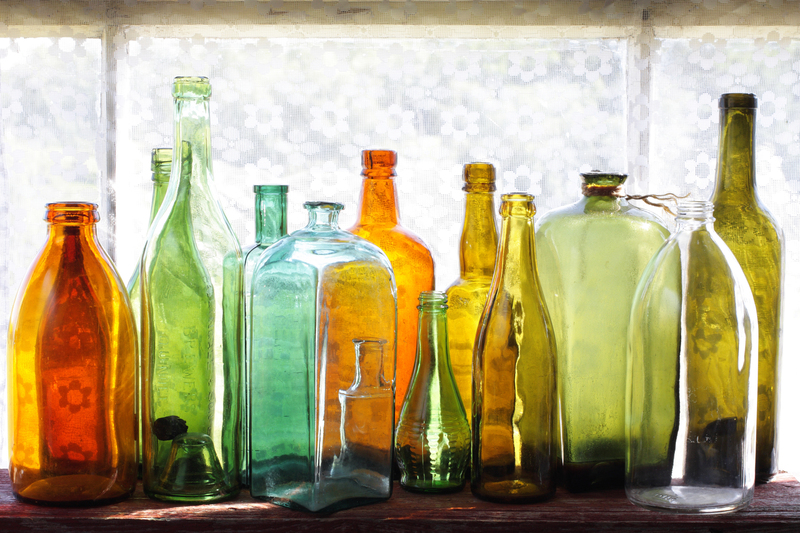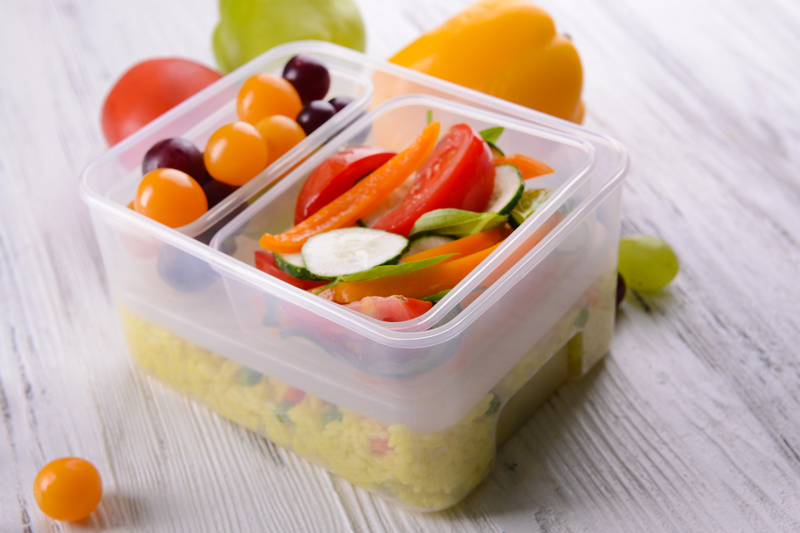Smart Disposal Options for Worn-Out Pots and Pans
Have your pots and pans seen better days? Disposing of old cookware isn't as simple as tossing them into the trash. In today's environmentally conscious world, smart disposal options for worn-out pots and pans are essential for reducing landfill waste and conserving valuable materials. This comprehensive guide explores eco-friendly ways to dispose, reuse, recycle, or repurpose your tired kitchen gear--helping you make not only a green choice, but sometimes a financially savvy one too.
Why Mindful Disposal of Old Pots and Pans Matters
Many households accumulate piles of worn-out pots and pans over the years. Whether your cookware is scratched, dented, warped, or simply outdated, it poses a challenge--how do you get rid of old cookware safely and responsibly? Here's why it's crucial to make smart choices:
- Environmental Impact: Metal and non-stick coatings can pollute landfills and are slow to break down.
- Resource Conservation: Metals such as aluminum and stainless steel are valuable and fully recyclable.
- Safety: Teflon and other coatings can release toxins if not disposed of correctly.
- Decluttering: Removing unused items frees up kitchen space and keeps your home organized.
Ask Yourself: Can Your Old Cookware Have a Second Life?
Before you proceed to disposal, consider if your pots and pans are truly at the end of their journey. Sometimes, old cookware can be repaired, donated, or repurposed. Here's what to assess:
- Repair: Are there loose handles or minor dents that can be fixed at home or by a professional?
- Usability: Can your pans still function for someone else, even if they're not suitable for your needs?
- Sentimental or Decorative Value: Could your vintage skillet become a unique planter or wall decoration?
If "yes" to any of these, consider upcycling or reuse before pursuing recycling or disposal.

Recycling Old Pots and Pans: A Smart Eco-Friendly Option
Metal Recycling is the Most Sustainable Disposal Choice. Most pots and pans are made of metals such as aluminum, stainless steel, or copper--materials that are in high demand for recycling. Here's how to proceed:
Step-by-Step: How to Recycle Worn-Out Cookware
- Identify the Material: Most recycling centers accept uncoated metals. Check your pots and pans to determine if they're aluminum, stainless steel, copper, or have a non-stick coating.
- Contact Local Facilities: Not all curbside recycling programs accept cookware. Search for local metal recycling centers, scrap yards, or city bulk waste collection days.
- Prepare Your Cookware: Remove any plastic, wooden, or rubber components like handles or knobs. For Teflon or non-stick-coated items, check with the center if they accept those materials.
- Deliver or Arrange Pickup: Many scrap yards accept old pots and pans directly. Some even pay for certain metals like copper or cast iron.
Pro Tip: If cookware is made of multiple materials (e.g., glass lids, silicone handles), try to separate as much as possible for the recycling process.
Special Considerations for Non-Stick and Teflon Cookware Disposal
Non-stick coatings such as Teflon (PTFE) complicate recycling. While the underlying metal may be valuable, these coatings are not always safe or accepted at all facilities. Here's what you should do:
- Check for Local Guidance: Some recycling centers have the ability to process non-stick cookware. Contact them and describe your items in detail.
- TTM or Take-Back Programs: Certain brands (like Calphalon and GreenPan) offer recycling or trade-in programs for their products. Research manufacturer-specific options.
- Last Resort: If there's no available recycling solution, you may need to dispose of non-stick pans in the trash as per your local regulations.
Donation: Giving Old Pots and Pans New Life
Even if your cookware is outdated in your eyes, it might still be of use to others. Donation is a rewarding and practical smart disposal option for worn-out pots and pans that are still serviceable. Here's how:
Where to Donate Used Cookware
- Local Charities and Thrift Stores: Organizations like Goodwill, The Salvation Army, or local shelters often accept gently used kitchen items.
- Community Groups: Post your items on platforms like Freecycle, Facebook Marketplace (for free), or Buy Nothing communities.
- Local Churches or Community Centers: Many host kitchenware drives or support newcomers and refugees setting up new homes.
Best Practices for Donating Used Cookware
- Clean Thoroughly: Wash and dry your pots and pans before donating.
- Check Condition: Only donate items that are safe and functional (not warped, badly damaged, or missing crucial parts).
- Group Donations: Bundle matching lids and pans when possible--it makes them more attractive to recipients.
Creative Repurposing: Upcycling Old Pots and Pans
Don't overlook the fun and utility that comes with upcycling old cookware. With a bit of imagination, your worn-out pots and pans can add character and functionality to your home or garden. Consider these creative ideas:
Upcycling Ideas for Old Pots and Frying Pans
- Planters: Drill drainage holes and fill your old pot with soil for an instant rustic planter--great for herbs or succulents.
- Bird Baths or Feeders: Mount an old frying pan atop a wooden pole for a charming garden feature.
- Wall Art: Paint and hang decorative pans or lids as vintage-style kitchen decor.
- Storage Bins: Use large stock pots to store pet food, tools, or garden accessories.
- Candle Holders: Small saucepans or lids can be transformed into quirky holders for homemade candles.
Upcycling not only prevents waste but also offers a unique opportunity to personalize your home while reducing your environmental footprint.
Share or Swap with Friends and Neighbors
Sometimes, a neighbor, friend, or family member might need an extra pot or pan for camping, crafts, or temporary uses. Consider organizing a cookware swap--an enjoyable way to keep usable items circulating and strengthen community bonds!
Retail Take-Back and Mail-In Programs
Several cookware brands and retailers have recognized the need for responsible disposal, offering smart disposal programs for old cookware.
Notable Pot and Pan Recycling Programs
- Calphalon Recycling Program: Accepts their aluminum cookware for recycling. Visit their website for instructions and eligibility.
- TerraCycle: Partners with brands for specialty recycling programs, occasionally including cookware and household items.
- ScrapIt! Program: Accepts metal pots and pans via mail. Check current availability and costs.
- Retailer Take-Back Events: Some stores host periodic cookware recycling events. Watch for flyers from stores like Williams Sonoma or Bed Bath & Beyond.
Before using these services, always remove non-metal parts, clean the items, and follow shipping or drop-off instructions carefully.
What Not to Do: Common Cookware Disposal Mistakes
Sometimes good intentions go awry. Avoid these common pitfalls when disposing of old pots and pans:
- Don't Place Cookware in Household Recycling: Standard recycling bins generally do not accept pots, pans, or metal cookware--this can damage sorting equipment.
- No Dumping in Nature: Leaving old cookware outdoors as "planters" or makeshift containers is illegal and environmentally harmful if not properly repurposed.
- Avoid Burning: Never try to burn off non-stick coatings or other cookware materials; fumes can be highly toxic.
Special Disposal of Broken Glass Lids
Glass lids that are chipped or shattered require care. Most curbside recycling programs do not accept tempered glass. Instead, wrap broken glass in newspaper or cardboard, tape it securely, and dispose of it in the trash per local guidelines.
Tips for Preventing Cookware Waste in the Future
Smart disposal starts with smart purchasing. Consider these steps to reduce the frequency of discarding pots and pans in the years ahead:
- Invest in High-Quality Cookware: Durable materials like stainless steel or seasoned cast iron can last decades.
- Avoid Cheap Non-Stick Pans: These tend to wear out quickly and are harder to recycle.
- Use Silicone or Wooden Utensils: Protects coatings, extending pan lifespan.
- Follow Manufacturer Cleaning Guidelines: Prolongs the effectiveness of non-stick surfaces and prevents warping.
- Repair Before Replacing: Loose handles, gaskets, or missing parts can often be fixed affordably.

Frequently Asked Questions About Smart Disposal of Worn-Out Pots and Pans
-
Can I put old pots and pans in the recycling bin?
No. Most household recycling bins do not accept cookware. Always check with your local recycling guidelines or bring items to a scrap metal facility. -
What can I do with rusty or severely damaged pans?
Severely damaged, rusted, or warped pans are excellent candidates for recycling as scrap metal. -
Are cast iron skillets recyclable?
Yes! Cast iron is 100% recyclable and valued at many scrap yards. Older cast iron pans are also highly sought-after in the secondhand market. -
How do I dispose of pans with wooden or plastic handles?
Remove handles before recycling, or bring the whole item and ask the recycling facility if they will accept mixed materials. -
Are there companies that recycle Teflon pans?
Some specialty recycling programs accept certain non-stick pots and pans. Always confirm before sending in your cookware.
Conclusion: Make the Smart Choice for Disposing of Pots and Pans
Old, unused, or damaged cookware doesn't have to clutter up your cabinets--or a landfill. As this guide has shown, there are smarter disposal options for worn-out pots and pans, from recycling and donation to creative upcycling and brand take-back programs. Be responsible, resourceful, and creative--the planet and your community will benefit from your efforts.
Remember: Every pot or pan you divert from landfill is a small victory for sustainability!
